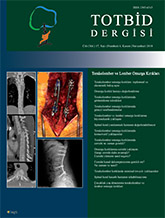
Pediatric spine fractures constitute 1–3% of all pediatric fractures. Younger children tend to have a higher proportion of cervical injuries. Only an estimated 0.6% to 0.9% of all spinal trauma cases are pediatric thoracic and lumbar spine injuries. Thoracolumbar spine trauma is an important cause of morbidity and mortality in pediatric patients. These injuries are frequently associated with high-energy trauma and concurrent thoracic or abdominal injuries that require coordinated multidisciplinary care. Pediatric spine trauma is less likely to result in fracture due to the greater elasticity and compressibility of the pediatric spine. Major difference between adults and children is the occurrence of spinal cord injury (SCI) without radiographic abnormality (SCIWORA). Depending on the nature of the injury and the patient`s level of skeletal maturity, thoracolumbar spinal injuries may have substantial ability to heal and remodel. Since the impact of thoracolumbar spinal injury on pediatric patients can be devastating, appropriate early diagnosis and management, as well as long-term follow-up, are imperative.